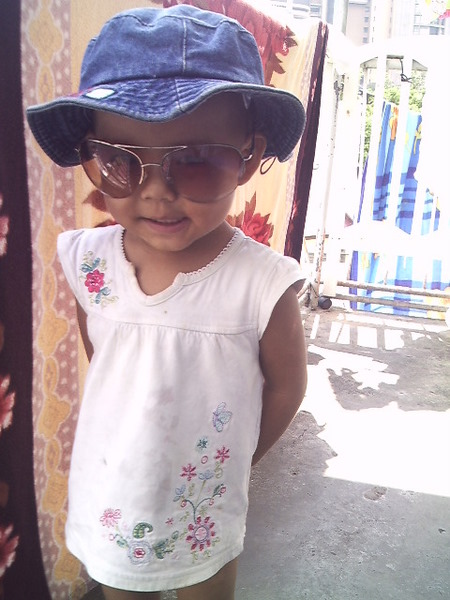

In ‘Everyone Has Hope’ (on now at Annexe Gallery, 18 – 27 Nov), seventeen Burmese refugee children in Kuala Lumpur give us a slice of their lives here through pictures they took themselves. Over the past few months, they learned the art of photography with the help of a small group of dedicated Taylor’s College students and staff, and support of British Council’s Global Changemakers, The Annexe Gallery and Amnesty International Malaysia.
We spoke with lecturer and passionate photographer Colin Shafer about this great project and planting seeds of art in the unlikeliest places.
Hi Colin, tell us about yourself and how you got started on this project with Burmese refugee children in KL.
I am Canadian eh. Currently teaching Social Science at Taylor’s College in the Canadian Pre-University Program. I also write a weekly column for the Malaysian Insider and am passionate about photojournalism.
I saw a documentary called Born into Brothels that involved kids with cameras, and thought it would be cool to do something similar. After doing a little volunteer work and class visits to the ACR refugee school, I knew that was a good place. Luckily a group of Taylor’s students wanted to run the project, and there it was!
How did the kids react when you first approached them? What were the developments you observed as the project progressed?
Definitely shy. The kids are continually working on their English skills, and the whole thing seemed overwhelming for them at first. Being given cameras, and interacting with college students was all new to them.
None of the project members expected these kids to have so much artistic talent. The pictures got better and better as they learned techniques and practiced.
What did you learn about the Burmese community in KL?
First of all — I managed to visit Myanmar this year, and was absolutely intrigued by the kindness, and generosity of the people. I have always felt a lot of warmth being around the Burmese community .
I don’t think people recognize the difficulties they face, and the fact that they would like to be home, if their home was safe and comfortable. They are here– in great numbers, and they need more support. The school has to live month to month, and they need to pay the bills.
Does this project change how you view the city and its inhabitants?
1Malaysia is more complex than it may seem at first. Many visitors seem to be indoctrinated with ideas that Malaysia is “made of three races” etc. etc. Malaysia is made of many different peoples and I think that ultimately that is a strength.
This project does make you realize the importance of educating people in these segments of society. Without schools like this what would these children do? They can’t attend public school in this country.
As an educator yourself, what role do you think art can play in getting communities to engage with each other? What are the potentials and pitfalls?
Art is good for everyone. The problem with groups in the margins of society is that they don’t usually get a chance to engage with art. Refugees need to seek out basic education or basic jobs, and art is not something usually available under such conditions.
It isn’t like a public school where extra-curriculars are available. These refugee schools are small and they don’t have the staff to run these programs. When something like this happens, and you see the kids excitement and growth you realize how important this stuff is in their lives.
What’s next for this group of kids? In what way do you see these seeds you have planted continue to grow?
They get to keep the cameras. They didn’t know that until the gallery opened. I think we will continue to go to the school over the next year and see what develops. It would be great to use these photos to raise more money for their school, and to bring awareness to their situation.
In the words of Aung Sung Suu Kyi: “If my people are not free, how can I say I am free? Either we are all free together or we are not free together.”
In the words of Peter Jackson, one of our young photographers: “Amazing”.


‘Everyone Has Hope’ is on at The Annexe Gallery, 18 – 27 Nov 2010. For more information, go here.
Sorry, the comment form is closed at this time.
[…] /2010/11/19/art-is-good-for-everyone/ […]